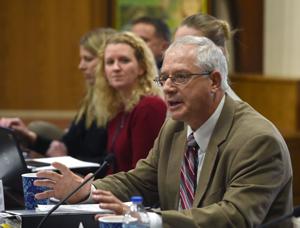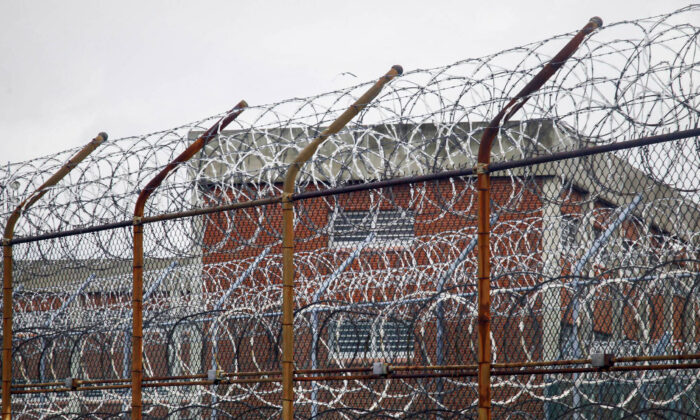
The inauguration of President Donald Trump today marks the beginning of a new era of race relations, even more so than his first term, when Trump ushered in perhaps the only modern administration whose was that systemic racism does not exist in the United States. In the future, historians might point out that the ceremony coincided with the holiday celebrating Martin Luther King Jr., the most prominent civil rights leader of the 1960s.
Others might also note that the inaugural came shortly after the country’s chief investigative and law enforcement agencies quietly closed the book on a notorious, massive unsolved crime in the annals of American racial history. The 1921 Tulsa, Oklahoma, race massacre has been as the worst single example of racial violence and domestic terrorism against Black people in U.S.

history. It is, in fact, one of the recorded episodes of mass racial violence in the nation’s history, as the outgoing assistant attorney general for civil rights, Kristen Clarke, a few months ago. Thousands of Black people lost their property, their businesses, their homes, and their communities, in an attack by their white neighbors from across the train tracks fueled by hatred, jealousy, and “yellow journalism”—not much different from the clickbait and sensationalism that dominates our media landscape today.
The two-day-long massacre began after newspapers falsely suggested that a Black shoe-shiner, Dick Rowland, had groped or otherwise sexually assaulted Sarah Page, a white woman who worked as an elevator operator in a downtown Tulsa building. Rumors of a planned lynching began to fly, followed by a segregated, armed standoff at the local jail; that quickly devolved into civil warfare, with white Tulsans—backed by the police and military power of the state—attacking and killing Black Tulsans, and running them out of town. At least 700 were injured.
The exact number killed remains unknown, though it is now estimated to be as many as 300, and perhaps more. Even now, the city and state governments of Tulsa and Oklahoma are , and of bodies riddled with bullets. Yet most Tulsans, and most of the rest of us, grew up not learning about the incident.
And, even today, most hardly noticed when the Department of Justice a cold case investigation into the massacre in September, under the Emmett Till Unsolved Civil Rights Crime Act; nor when the department , barely three months after starting, and shortly before it would have had to hand it off to a new administration. The Justice Department’s January 10 are striking, for a number of reasons, and despite the brevity of its investigation. First, the report greatly clarifies some of the facts surrounding the incident; it supports some existing interpretations, and not others.
That includes affirming that there had been no assault against Page, that the first shot was likely fired by a white man, and that there existed a previously undisclosed account of a local law enforcement officer, named Jack Rigdon (or Rigden), who drove to neighboring Jenks, Oklahoma, to recruit additional white attackers, and later bragged about personally killing four Black men. Second, these additions to the record have come largely by way of an earlier, investigation, by an FBI agent who reported to his bureau chief in the very first days after the massacre. Agent T.
F. Weiss, after watching, hearing, and smelling the aftermath of an ethnic-cleansing event, concluded that it was an unfortunate mishap—having little to do with racial animosity—caused by the victims themselves. And the federal government, in turn, left the factual findings in the Weiss report undisclosed to a 1997 state investigative commission, the public, and the victims whose multivarious attempts to seek redress have been rejected for more than a century.
“Although flawed in multiple ways, the agent’s report contains crucial information not discussed in other sources that describe the massacre,” the Justice Department said in its latest report. The DOJ also noted that there are no known living perpetrators, and that, in any case, the statutes of limitations and the dearth of living witnesses make prosecution essentially impossible. Hannibal B.
Johnson, an attorney and author who has written several books about Tulsa and the 1921 massacre, said some Tulsans have been disappointed by the lack of recommendations of “actionable items,” but added that the report is a positive development, all things considered. “This is a welcome and credible addition to the historical record,” Johnson said. “It puts the Justice Department on what I think is the right side of history, at least in terms of characterizing the events that transpired.
” Asked why the case was closed so quickly, Johnson replied, “Perhaps the thinking was ‘If we’re ever gonna go on the record about this, we better do it now before the administration changes, and we might not be allowed to use our time this way.’” , the DOJ’s Bureau of Investigation—today’s FBI—sent Agent Weiss to look into what was being described as a “race riot,” according to the Justice Department report. Weiss arrived in Tulsa on June 1, 1921.
At the time, the country was still reeling from the “Red Summer” of 1919, a period of intense white supremacist terrorism that resulted in lynchings, civil warfare, and murderous ethnic cleansing in dozens of American cities. Weiss claimed to have talked to over 100 witnesses, including Tulsa police chief John Gustafson, a white local attorney named L.W.
Crutcher, and a deputy U.S. marshal.
Weiss found out quite a bit, according to his previously undiscovered report. Gustafson told Agent Weiss that Page “bore no scratches, bruises, or disarranged dress, and that she stated the boy has made no bad remark of any kind; that she just got scared” and screamed. No written account of Page’s statement to police after the incident had ever been found, until now.
Rowland, the alleged assailant, told Gustafson that he had taken hold of Page’s arm, “but insisted he and she had been joking and playing,” and that he just “got scared and ran when she screamed.” (Researchers and historians have speculated over the years that there may have been a relationship between the two, or that they would have been familiar, given that Rowland regularly took the elevator to access a “colored only” bathroom in Page’s building.) The Justice Department added that Gustafson’s observations are “corroborated by the fact that Page declined to pursue charges, which suggests that she did not perceive Rowland’s actions to be criminal.
” Weiss also reported an account of the action that precipitated the mass violence, which contradicts more commonly recited accounts suggesting that the first shot was fired by a Black man, or that we simply lack information about what triggered the looting, killing, and destruction. According to Crutcher, some of the Black men who gathered at the local jail insulted the would-be lynch mob of white men, prompting one to remark that he would “show ni**ers about cursing whites” if he had a gun, according to Weiss’s report. At that point, another white man handed the speaker a firearm, saying, “[t]here is a gun, brother,” and the first man fired into the crowd of Black people.
Crutcher’s account “squarely places the blame on a white man trying to teach Black men a lesson,” the Justice Department said. The DOJ also stressed that the massacre was an organized, systematic, and efficient siege, carried out by a group that included police, National Guardsmen, and white Tulsans who “had recently drilled together as the ‘Home Guard,’” referring to units formed to replace soldiers who’d left to fight in World War I. The report repeatedly intimates that a loud whistle or siren, which was heard on the morning of the massacre, was likely a signal announcing a coordinated invasion.
Importantly, Weiss’s report and other accounts of the massacre also make it entirely clear how the prevailing attitudes of the day threatened American, including affected white folks. White marauders broke into pawn shops and sporting goods shops owned by white residents in order to steal guns and ammunition; a hardware store owner accused a police captain of breaking into his store in order to deal out arms; Chief Gustafson was convicted of a series of crimes; one white marauder who had been recruited by Rigdon to join the raids ended up dead; another white man was murdered in his car after being mistaken for a Black person; and white residents who had been out, with no intention of participating in a pogrom, reported being “terrified by the sudden violence,” the DOJ said in its report. “I’ll never forget the terror I felt that night,” one white witness later said.
Witnesses told Agent Weiss that law enforcement had either done nothing to stop the violence and looting, or participated in it themselves. One man was “indignant” about testifying against Rigdon, the officer who later bragged about murdering four people. Yet when Weiss reported up the chain a day later, he wrote that the “trouble started spontaneously,” due to local police corruption.
“No Federal violation appears,” Weiss wrote. Those same attitudes—the persistent racial animosity, the easy resignation to violence, the feigned ignorance—have perpetuated themselves into the present day, in only slightly different forms, even as we’ve made much progress in race relations. That’s why the DOJ’s investigation only lasted three months before being shut down.
It’s why most Americans might have missed that we are closer to the truths of a seminal episode in our nation’s history, one that prompted comments from the American president , as well as . And that’s also why we are unlikely to see or hear anything else from the federal government, let alone the president being inaugurated today, about this case for the foreseeable future, even though there’s so much to learn—about ourselves, about our mistakes—in its history..















